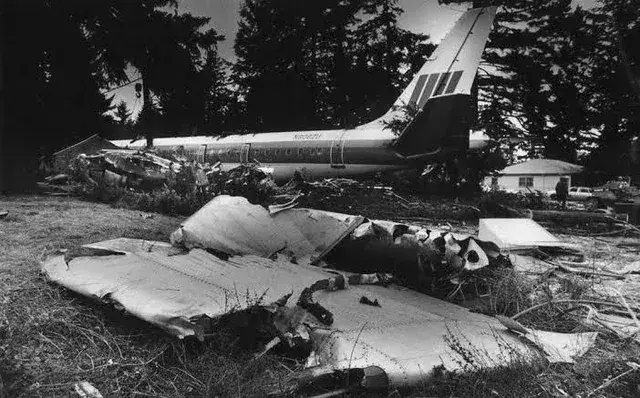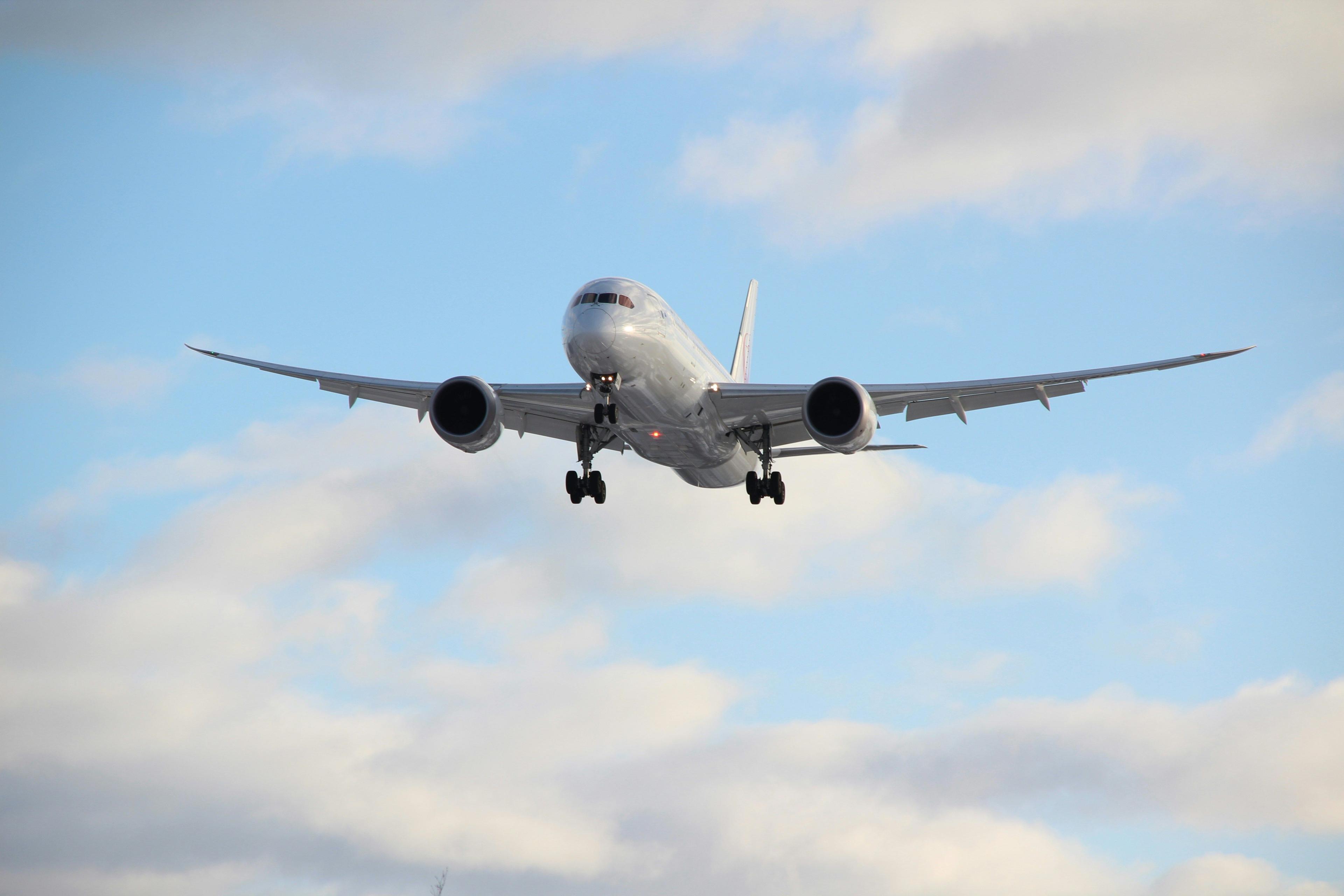Image source: John Arthur/ Unsplash
On December 28, 1978, United Airlines Flight 173 was nearing Portland after a routine trip from Denver. Just as Captain Malburn McBroom lowered the landing gear, he heard a sharp thud, followed by silence. The small green light that should’ve confirmed the gear was locked into place never lit up. Concerned that the landing gear might not have deployed, McBroom abandoned his descent and began circling the city to buy time.
For nearly an hour, the aircraft traced loops over Portland’s suburbs. Passengers, unaware of the unfolding crisis, thought they were simply waiting for their turn to land. Inside the cockpit, however, tension thickened. McBroom’s focus narrowed entirely to the landing gear — he ordered repeated checks, discussed possibilities, and even asked air traffic control if they could visually confirm whether the wheels were down. From their angle, the tower could see that the gear appeared extended, but McBroom wasn’t satisfied.
Meanwhile, the flight engineer and the co-pilot were growing increasingly anxious. The fuel gauges had been warning that the aircraft was dangerously close to empty. “We’re going to lose an engine,” the flight engineer cautioned. “We’re getting low on fuel.” The co-pilot echoed the concern several times. Each time, McBroom acknowledged it briefly, then returned to discussing the landing gear. He was confident they still had time. They didn’t.
At 6:13 PM, one of the engines flamed out. Within minutes, the others followed. The DC-8 turned into a silent glider. McBroom managed to steer it away from residential homes and crash-landed in a wooded area, tearing through trees before coming to rest less than 10 miles from the airport. Ten people died, including the flight engineer who had vainly warned the pilot minutes before disaster.

The post-crash investigation revealed that the landing gear had been perfectly locked all along. The indicator light had simply malfunctioned. Statistically, even if the landing gear hadn’t deployed, the odds of fatalities from a belly landing were almost zero. It would’ve been a hard, noisy landing, but survivable. Instead, McBroom’s fixation on a manageable problem invited a far deadlier one.
~
A little over thirty years later, one of the most famous incidents in aviation took place.
On a cold January morning in 2009, US Airways Flight 1549 took off from New York’s LaGuardia Airport. It was a short, routine hop to Charlotte, North Carolina. At the controls was Captain Chesley “Sully” Sullenberger, a 57-year-old veteran with over 20,000 flying hours, and First Officer Jeff Skiles, who was on his first week flying the Airbus A320.
Everything was normal for exactly 90 seconds. Then, at 2,800 feet — barely three minutes after takeoff — the plane flew straight into a flock of Canada geese. Within seconds, both engines went silent. The cockpit was quiet except for the rush of air over the fuselage. The aircraft had lost all thrust.
Sully immediately took control. “My aircraft,” he said calmly, as Skiles began working through the emergency checklist to restart the engines. Nothing worked. They had less than four minutes before the plane would hit the ground.
Air traffic control suggested two possible airports — Teterboro in New Jersey and a return to LaGuardia. But Sully quickly realized they wouldn’t make either. The plane’s altitude was dropping too fast, and turning toward any runway risked crashing into densely populated areas. “We can’t do it,” he told ATC. “We’re gonna be in the Hudson.” It turned out to be one of the most extraordinary decisions in aviation history.
Sully aligned the powerless jet with the Hudson River, leveled it out, and asked the passengers to “brace for impact.” At 3:31 PM, the aircraft hit the icy water at about 150 miles per hour. The plane skidded across the surface and came to a halt, floating like an enormous silver raft. Within minutes, ferries, Coast Guard boats, and helicopters surrounded it, rescuing all 155 people on board.

In the hours that followed, the world erupted in awe. The press called it “The Miracle on the Hudson.” President-elect Barack Obama personally phoned Sully to thank him for his heroism. He was honored at the Super Bowl, invited to the inauguration, and awarded the Master’s Medal of the Guild of Air Pilots and Air Navigators — one of aviation’s highest recognitions.
~
Sully became a hero.
McBroom, the pilot of the ill-fated United Airlines 173 flight, didn’t, to put it mildly. But he, too, was a brilliant pilot. His grave mistake overshadowed the skill and composure he showed as he guided the DC-8 aircraft between trees, avoiding an apartment block, and finding the minimum impact force for a 90 tonne aircraft hitting solid ground. Fatalities would have been much higher had the pilot been any less competent.
In the case of Sully, while his brilliance in avoiding a disaster was unequivocally celebrated, many experts pointed out several other things that contributed. The fly-by-wire technology of Airbus, ergonomic cockpit design, checklists — all of these allowed Sully to make better decisions. Even more importantly, all these advancements had, in some way or the other, been an outcome of previous mistakes. Checklists, for instance, originally emerged from a series of crashes in the 1930s. Ergonomic cockpit design was the result of a series of accidents involving B-17 aircraft. Crew Resource Management was born from the United Airlines 173 wreckage.
What Sully had at his disposal that McBroom didn’t was an additional three decades of mistakes and learnings encoded into the aviation system and culture. That’s what makes aviation and the phenomenon of the black box so unique.
Every commercial aircraft today carries two black boxes. One is the Flight Data Recorder (FDR), which logs thousands of parameters from every flight: engine performance, altitude, airspeed, control inputs, and more. The other is the Cockpit Voice Recorder (CVR), which captures every sound inside the cockpit — from conversations and radio calls to even subtle clicks and alarms. Together, they serve as aviation’s memory. When an accident happens, investigators look for these boxes. They replay the final minutes, decode what went wrong, and use that knowledge to prevent the same mistake from ever happening again. Almost every new regulation, checklist, or cockpit redesign has, in some way, emerged from insights buried inside these boxes.
And it’s not like they wait for a plane to crash to learn. Even relatively small errors are reported by pilots, and they’re studied to avoid any potential disaster in the future. Mistakes are not stigmatised, but treated as learning opportunities.
The impact has been nothing less than staggering: in 1959, there used to be 40 fatal accidents per million flights. The corresponding number today is 0.1 per million — a 400x drop.
~
The unfortunate part is that no black box equivalent exists in any other sector, many of which are far more dangerous than aviation.
In the last 25 years, about 3000-4000 lives were lost worldwide in passenger aircraft crashes. But about 4x more people die in road accidents every month in India alone. Globally, road accidents account for almost 1.2 million deaths every year. Tragically, these are the leading cause of death for ages 5–29. India is especially notorious in not having any system of accountability for bad roads and traffic rules compliance. Unsurprisingly, we have some of the most dangerous roads in the world.
And forget accidents, by some estimates, over 13,000 people in India die every day due to medical negligence. Worldwide, over 3 million deaths occur annually from unsafe care. Most culprits get away with “We tried our best, sorry!”
There’s never been a clamour for answers or a demand for foolproof safety systems in these sectors. A plane falling from the sky is just too shocking and violent to ignore. Other types of accidents aren’t, unfortunately.
And because we don’t demand it, no other sector has a black box equivalent that tracks and measures everything and forces corrective action.
Air travel will continue to become safer, but people on the ground will never know what hits them.
What we’re reading at Wyzr
Black Box Thinking by Matthew Syed. Think of the book as the much more elaborate, extended version of the idea shared in this newsletter. It talks about why we need a black box mindset to become exceptional in any field, and how it can be implemented by anyone and anywhere.
Subscriber Spotlight
Apoorva on our article, "Subject of human psychology intricately woven .. the metaphorical representation of traffic makes for a good read.."
~
Hope you enjoyed this edition of Plain Sight. If you did, share it with a friend. And as always, write to us with your thoughts at plainsight@wyzr.in. We love hearing from our readers and we’ll feature some of the most interesting responses in future editions.
Until next time,
Best,

